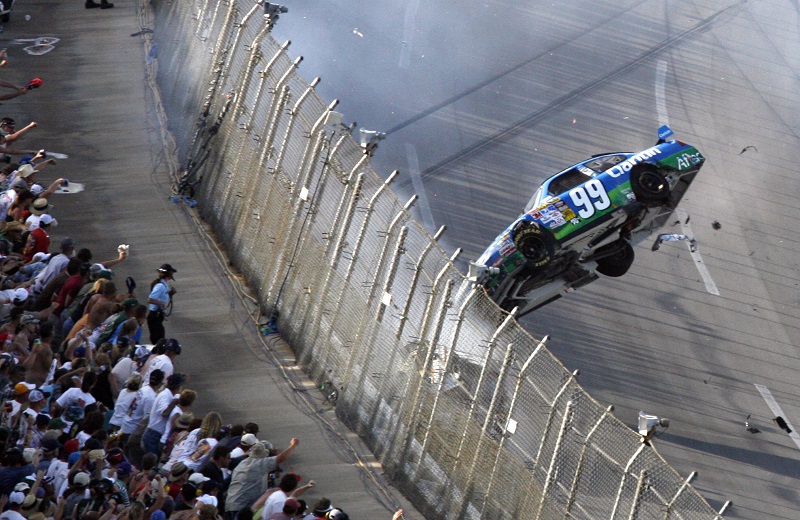CP MOTORSPORTS - LOUIS BREWSTER: CHANGES ARE IN ORDER
Click here to follow us on Twitter @circletrackplus

 Many of us can recall the horrific crash on May 3, 1987 during The Winston 500 at Talladega Superspeedway that forever changed the fa ce of NASCAR.
Many of us can recall the horrific crash on May 3, 1987 during The Winston 500 at Talladega Superspeedway that forever changed the fa ce of NASCAR.
There was Bobby Allison, a tire cut by an exploding engine, flying through the air, headed backward for the catch fence. It was a sight never seen in the sport, although there had been previous incidents where cars flew off the high banks and landed outside the track.
This accident was different, much different. The fence did its job, preventing the speeding Buick from entering a packed grandstand. There's no telling how different the outcome might have been had the car had actually made contact with the paying customers.
In what many consider a minor miracle, only five fans were injured, none seriously. Even flagman Harold Kinder escaped unscratched as he continued to wave the yellow flag with debris flying all about him.
NASCAR promptly made changes to slow the cars down, in hopes another such incident would not happen again.
The sanctioning body has been at the forefront of safety changes for the drivers, but it has not done enough to keep cars from making contact with the fence, and putting fans in danger. Oh, the paying customers know the sport is dangerous, but do you think they would pay hard-earned dollars for a risk of getting hurt? Viewing, hearing and feeling the thunder is one thing, getting hurt is out of the question.
Twenty-two years later, Carl Edwards also sailed into the Talladega fence, with some help from Brad Keselowski. Eight fans were injured by debris but Edwards was able to climb out if his wrecked Ford and race to the finish line.
That crash was striking similar to the one early Monday at Daytona. Soon after crossing the finish line of the Coke Zero 400, a tightly-packed field s at close to 200 phtarted crashing. Austin Dillion's Chevrolet was sent flying upside down into the fence. Once again, the fence did its job although only one of 13 fans impacted by debris was taken to the hospital.
Cars and trucks hitting the safety fence have become commonplace at Daytona. In fact, there have been two such incidents since 2012 that have left many injured. Thanks to NASCAR rules, no driver has been hurt but officials have held their breath for a record length until the reports are in about fans.
NASCAR, which created restrictor plate racing as the result of the Allison crash, needs to do something about speeds once more. While 200 mph has a great ring to it, the type of racing it has produced is not what the drivers and fans want.
“It's not really acceptable, I don't think,” Dillon said after being examined at the care center. “We've got to figure out something. Our speeds are too high, I think. I think everybody could get good racing with slower speeds.
“We can work at that, and then figure out a way to keep the cars on the ground. That's the next thing. We're fighting hard to make the racing good. I hope the fans appreciate that. We don't, but it's our job. You go out there and hold it wide open to the end and hope you make it through.”
Fans shouldn't have to hope they make it through.




